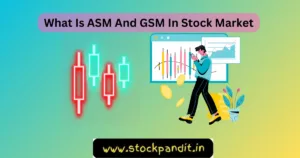Definition of What Is Square Off In Stock Market:
Squaring off is a type of trading that investors and traders use primarily for day trading. Essentially, the trader purchases or sells a specific amount of an asset (usually stocks) and then reverses the transaction later in the day in the hopes of making a profit (price difference net of broker fees and tax).
Example of Square off in Stock Market
Assume, for instance, that you paid Rs. 100 for 100 shares of a company’s stock, hoping the price would increase. Nonetheless, you can choose to square off your position by selling the 100 shares at the current market price of Rs. 95 per share if the stock price continues to decline and you wish to minimize your losses.

The trader has essentially squared off his position as a result.
Square Off: Closing Positions Strategically
Square off is the term used to describe the process of closing out a position in a derivative contract, such as a futures or options contract, by taking an opposite position in the same contract.
For instance, you may square off your position by selling a futures contract for 100 shares of the same business, closing out your earlier investment, if you had bought a futures contract for 100 shares of a specific company with the assumption that the price would climb.
Read More Like This: What Is LTP In Stock Market-2024
Intraday Trading: What Is Square Off In Stock Market
Purchasing and selling stocks on the same day, before the market closes, is known as intraday trading. Your broker may square off your position if you don’t comply.
The equities you purchase in delivery trades are added to your Demat Account. They are your property until you make the decision to sell them, which may take days, weeks, months, or even years. You take pleasure in total ownership of your stocks.
Square Off
The phrase “square off” refers to closing all open positions by the end of the trading day in intraday trading.
To put it another way, you have to sell the shares you purchased for intraday trading in the morning before the market closes.
Shares must be bought by EOD if they have already been purchased, and sold by EOD if they have already been sold.
Assume you purchase 100 shares of Company X at a price of Rs. 10 per share from the BSE Sensex via a broker.
For example, Rs. 10 * 100 shares equals Rs. 1000.
Later In The Day
You choose to sell your shares for Rs. 12 a share when the market price of the shares you purchased in the morning rose to Rs. 12.
For example, Rs. 12 * 100 shares equals Rs. 1200.
Profit is therefore equal to the selling price less the purchase price.
= 1200–1000
= 200 rupees
Additionally, you gave your broker the twenty rupee brokerage fee.
For example, 200 – 20 = 180
Okay. The profit you receive before government, SEBI, and STT levies is Rs. 180.
Here’s how squaring off your position can help you benefit.
Watch This Short Video on The Topic
In a trading scenario, what does square off mean ?
In the stock market, closing a position is referred to as “square off.” A trader is termed to be “long” or “short” in a share when they buy or sell it.
Closing a position, selling shares if a trader is long, or buying shares if a trader is short is known as “square off.”
What distinguishes sell from square off ?
Selling is giving up something in exchange for cash or another asset, whereas square off is adopting the opposite position to close a trade.
When closing a bought position, they can be used interchangeably; however, when closing a sold position, they cannot be used interchangeably; in that case, squaring off is required.
Following square off, what happens ?
Definition: Squaring off is a type of trading that investors and traders use primarily for day trading. Essentially, the trader purchases or sells a specific amount of an asset (usually stocks) and then reverses the transaction later in the day in the hopes of making a profit (price difference net of broker fees and tax).
How is square off calculated ?
You have the option of playing as either black or white. You must push down on the piece you wish to move until you hear a beep for each move, and then you must push down on the square to which you are moving it until you hear another beep.
The board will beep multiple times if you make an unauthorized move, and you will have to exit.
If I fail to square off within the day, what would happen?
For the purpose of making the most profit, you can choose the timing of your trades or when to trade your shares in intraday trading.
However, your shares will be automatically squared off by your broker if you don’t square off your transactions by the end of day trading. The moment before the market shuts, brokers automatically square off.
Is square off subject to any fees ?
When intraday positions (MIS and CO) are not closed before the square off time and Zerodha has closed the position, a call and trade (auto square off) penalty of ₹50 + 18% GST is assessed. Half an hour prior to the market’s closure.
What is the intraday square off time ?
The intraday square-off typically takes place between 3:15 and 3:30 pm. Thus, ensure that you have left your existing roles before then.
Is it possible to close an option sale before it expires ?
By adopting the opposite position from your open or preexisting position, you can square off your options before they expire.
This implies that a trader squares off a long position by taking a short position in the same contract, and vice versa.
How may square off charges be avoided ?
How can you stay away from these fees? You can square off your intraday positions on your own at any time before 3:00 PM for equity and F&O, 4:30 PM for currency derivatives, and 10:00 PM for the commodities segment to avoid paying these fees.






